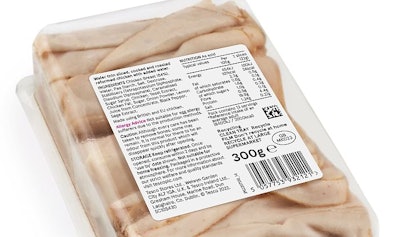
If you want to be the world’s most sustainable meat business, all activities need to come under review, no matter how big or how small. Sometimes changing even the smallest of things can result in major savings.
For those who think of the U.K.’s Cranswick as simply a pig business, it may come as some surprise that poultry has grown to accounting for 19% of its revenues, while its pig operations now contribute approximately only 25%. For those not that familiar with the business, there may be another surprise associated with Cranswick: a few years ago it committed to being the world’s most sustainable meat business.
The company has implemented numerous initiatives to that end and, earlier this month, it was announced that new labels on products in its Convenience Foods division would be introduced that would offer significant environmental benefits.
What’s in a label?
Cranswick, also active in convenience and gourmet foods, along with petfood, has been working with packaging company Coveris and with food packaging solutions producer and material supplier UPM Raflatac on a new range of labels and recycling solutions to reduce the carbon impact of Cranswick Convenience division’s labels.
The division will stop using a PET release line, or backing line, for its labels, and instead adopt a fiber material, called RAFNXT+, to be subsequently recycled by Coveris.
Its developers say that the material delivers a weight saving of 12% per label, and that the liner will remove over 36 million metric tons of plastic PET from the supply-chain annually. In a first, the label material has been verified by decarbonization consultancy The Carbon Trust.
Compared to standard labelling, the materials used have a positive climate impact, its developers claim, including the smarter use of raw materials and reduced pressure on forests. Together, the new material and the recycling process are believed to support a CO2 saving of 20%, a reduction in water consumption and a 6% energy saving.
While the environmental impact of attaching a small label to a poultry product, or any other, may seem miniscule in comparison to other activities, it is worth thinking about how many labels are attached in a food business in a day, or a week or a year. If you multiply that by how many food businesses exist in any given country, or across the world, then the benefits of more environmentally friendly labelling options become all the more apparent.


















